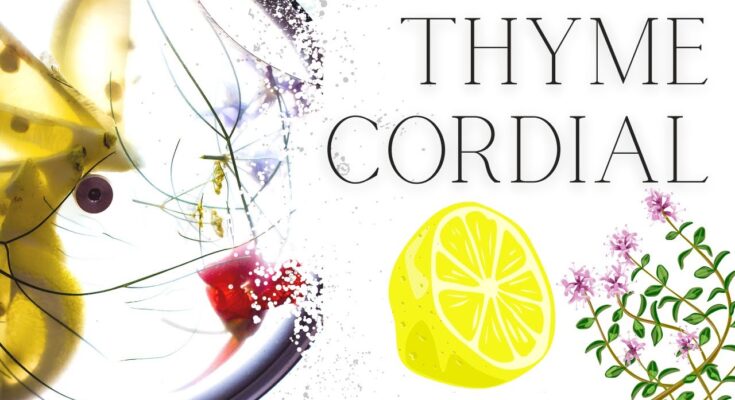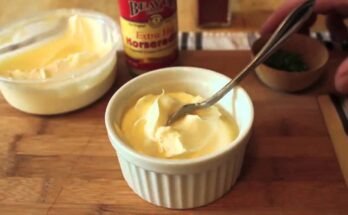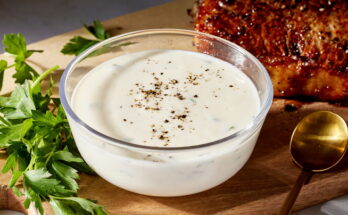Herbal Cordial Recipe: A herbal cordial is a sweet, concentrated syrup infused with the goodness of herbs, often mixed with water, soda, or alcohol to create a refreshing and therapeutic drink. Think of it as a homemade herbal elixir, bursting with flavors and health benefits. Unlike commercial sodas and juices loaded with artificial additives, a cordial is naturally flavored and can be tailored exactly to your taste and health needs. Plus, making it yourself is like bottling up a little bit of nature’s magic to enjoy anytime!
When you hear “cordial,” you might think of an old-fashioned remedy—and you wouldn’t be wrong. Historically, cordials were considered medicinal, used to treat ailments ranging from digestive issues to stress relief. Today, while they still hold some therapeutic value, they are equally appreciated for their delicious flavors and natural charm.
Brief History of Herbal Cordials
Herbal cordials have been around for centuries. Originally crafted by monks and herbalists in medieval Europe, they combined various herbs with honey or sugar to preserve them. These mixtures weren’t just for taste—they were believed to strengthen the body, uplift the spirit, and heal minor illnesses. Ancient apothecaries often recommended a “cordial” to invigorate the heart, hence the term itself—derived from the Latin word “cor,” meaning “heart.”
Over time, herbal cordials evolved into a staple in both kitchens and medicine cabinets. Today, they’ve become trendy once again, as more people turn towards traditional, natural remedies and the art of home apothecary.
Benefits of Making Your Own Herbal Cordials
Health Benefits
One of the most exciting things about crafting your own herbal cordial is the control you have over what goes into it. Unlike store-bought beverages, your homemade cordial won’t be jam-packed with artificial colors, preservatives, or excess sugars. Instead, it’s filled with real herbs that offer real benefits.
For example:
- Chamomile soothes the nerves and promotes relaxation.
- Elderberry boosts the immune system and helps fend off colds.
- Lemon balm is known for its mood-lifting properties.
- Ginger and mint can aid digestion and ease upset stomachs.
When you make herbal cordials yourself, you can target specific health needs, making each bottle a personal wellness boost!
Economic and Sustainability Perks
Let’s be real: buying quality herbal products can get expensive. Making your own cordial is not only budget-friendly but also eco-friendly. You can source herbs locally or even grow them in your backyard. Plus, you can reuse bottles and jars, cutting down on waste. It’s a win-win for your wallet and the planet.
Beyond that, it’s incredibly satisfying. There’s something almost meditative about working with your hands, watching herbs steep, and bottling up your own little concoctions. It reconnects you to traditions that are deeply rooted in human history.
Essential Ingredients and Tools
Common Herbs Used
Not all herbs are created equal when it comes to making cordials. Some herbs are better suited for syrups because of their flavors, colors, and healing properties. Here’s a handy list:
- Elderberries – immune-boosting powerhouse
- Lavender – calming and aromatic
- Rose petals – heart-opening and beautifying
- Mint – refreshing and digestive aid
- Ginger – warming and great for circulation
- Lemon balm – calming and antiviral
- Chamomile – soothing and gentle
Feel free to mix and match based on your desired flavor and benefit!
Necessary Tools and Equipment
You don’t need a professional kitchen setup to make a great herbal cordial. Here’s what you’ll need:
- Large saucepan – for making your syrup base
- Fine mesh strainer or cheesecloth – to filter out herbs
- Glass bottles or jars – for storage
- Measuring cups and spoons – to get proportions right
- Wooden spoon – for stirring without introducing unwanted flavors
- Funnel – to avoid messy spills during bottling
Optional but handy:
- Mortar and pestle – for lightly crushing herbs to release more flavor
- Thermometer – to avoid overheating and losing herbal potency
Once you’ve gathered these basic tools, you’re ready to create some liquid magic!
Choosing the Right Herbs
Matching Herbs to Purpose (Relaxation, Digestion, Immunity)
Picking herbs isn’t just about flavor—it’s about purpose, too. Different herbs serve different needs, and choosing the right ones makes your cordial not just tasty, but also functional.
Here’s a quick guide:
| Purpose | Recommended Herbs | Notes |
|---|---|---|
| Relaxation | Chamomile, Lavender, Lemon Balm | Best taken before bedtime |
| Digestion | Mint, Ginger, Fennel | Great after meals |
| Immunity Boost | Elderberry, Echinacea, Thyme | Ideal during cold and flu season |
| Energy & Focus | Rosemary, Ginseng, Peppermint | Good for mornings or busy days |
| Heart Health | Hawthorn, Rose Petals, Hibiscus | Supports cardiovascular wellness |
Matching herbs to your current mood or health needs personalizes your cordial even further. You can even create seasonal batches—warming blends for winter and cooling, refreshing blends for summer.
Step-by-Step Herbal Cordial Recipe
Step 1: Gathering Ingredients
First things first: gather everything. Here’s a basic starter list for a simple, immune-boosting elderberry cordial:
- 1 cup dried elderberries (or 2 cups fresh)
- 4 cups water
- 1 cup honey (or more, depending on taste)
- 1 small piece of fresh ginger, sliced
- 1 cinnamon stick (optional)
- 1-2 cloves (optional)
Fresh herbs are wonderful if you have access to them, but dried herbs are perfectly fine, too.
Step 2: Preparing the Herbs
Give your herbs a quick once-over. If using fresh, rinse them gently to remove dirt or bugs. If using dried, measure them carefully. Crushing herbs lightly with a mortar and pestle can help release more of their goodness into your syrup.
Now, you’re ready to make the magic happen.
Step 3: Creating the Syrup Base
Once your herbs are ready, it’s time to make the syrup. Pour the water into a large saucepan and add your herbs (in this case, elderberries, ginger, and any optional spices like cinnamon or cloves). Bring the mixture to a gentle boil over medium heat.
Once boiling, reduce the heat to low and let it simmer uncovered for about 30 to 45 minutes. You want the liquid to reduce by about half — this concentrates the flavor and the beneficial properties of the herbs.
The smell filling your kitchen will be incredible—warm, earthy, and spicy all at once! Stir occasionally to make sure nothing sticks to the bottom. This step is crucial because if you rush it, you’ll end up with a weak cordial. Patience really does pay off when crafting herbal cordials.
A pro tip: keep the lid slightly ajar while simmering to allow steam to escape without losing too much moisture too quickly.
Step 4: Infusing the Herbs
Once your mixture has reduced, remove it from heat. Now’s the time to let it infuse even further.
Cover the saucepan and let the herbal mixture sit for another 20 to 30 minutes. This gives the herbs one last chance to release all their goodness into the liquid. Think of it like steeping a very strong cup of tea.
After infusing, strain the mixture using a fine mesh strainer or cheesecloth into a clean bowl. Press the herbs to extract every last drop of liquid—that’s where all the concentrated flavors and nutrients are hiding!
Discard the spent herbs (or compost them if you can!) and admire your deep, richly colored herbal extract. It’s the foundation of your cordial!
Step 5: Finalizing and Storing
Now comes the sweet part—literally! While the herbal liquid is still warm (but not hot), add your honey and stir until fully dissolved. If you’re making an alcoholic cordial, this is where you’d also add a splash of brandy or vodka (about ¼ cup per 2 cups of finished syrup) to help preserve it longer.
Taste your cordial at this point. Too tart? Add a little more honey. Too sweet? A squeeze of fresh lemon can balance it out beautifully.
Pour the finished cordial into sterilized glass bottles or jars, using a funnel to keep things neat. Label your cordial with the name, date, and key ingredients—you’ll thank yourself later!
Store your cordial in the refrigerator. Without alcohol, it should last about 4 to 6 weeks. If you added alcohol, it can easily last 3 months or more.
And just like that, you’ve created your very own herbal cordial! It’s beautiful, delicious, and something you crafted with your own hands—how cool is that?
Tips for Customizing Your Herbal Cordial
Flavor Variations
One of the best parts of making herbal cordials is how customizable they are. Here are a few tasty variations you might want to try:
- Floral: Rose petals + lavender + chamomile
- Spicy: Ginger + cinnamon + cloves + cardamom
- Citrusy: Lemon balm + orange peel + mint
- Berry Boost: Elderberries + raspberries + hibiscus flowers
Want it sweeter? Add more honey. Prefer a tart edge? Include some lemon or hibiscus. The possibilities are endless, and you can tailor each batch to the seasons or your mood.
Alcoholic vs Non-Alcoholic Versions
Some people prefer their cordials alcohol-free, especially if making them for kids. Others like adding a bit of alcohol for preservation and a little adult kick.
- Non-alcoholic: Simply stick with honey and herbal infusions.
- Alcoholic: Add a neutral spirit like vodka or a flavorful one like brandy after straining and before bottling.
A small amount of alcohol will preserve your cordial longer and give it a nice, warming edge that’s perfect for winter sipping!
How to Use Herbal Cordials
As a Beverage
There are so many ways to enjoy herbal cordials!
- With Water: Add 1–2 tablespoons to a glass of still or sparkling water for a refreshing drink.
- With Tea: Stir a spoonful into hot tea for extra flavor and health benefits.
- With Cocktails: Use your cordial as a mixer in cocktails—elderberry cordial with gin is divine!
In Desserts and Culinary Dishes
Get creative in the kitchen:
- Drizzle over pancakes, waffles, or yogurt.
- Mix into salad dressings for a sweet herbal twist.
- Brush onto cakes or pastries for added moisture and flavor.
Basically, wherever you’d use a flavored syrup, you can use your homemade cordial!
FAQs about Herbal Cordial Recipe
What is a Herbal Cordial?
A herbal cordial is a sweet, concentrated syrup infused with herbs, fruits, and spices. It’s often diluted with water, sparkling water, or alcohol to create a refreshing and health-boosting beverage.
What Are the Best Herbs to Use?
Some of the best herbs for a cordial include mint, basil, elderflower, chamomile, rosemary, and lavender. Choose herbs based on your taste preference and the health benefits you desire.
Can I Make a Sugar-Free Herbal Cordial?
Yes! You can substitute traditional sugar with honey, agave syrup, or stevia to create a lower-sugar or sugar-free version of herbal cordial.
How Long Does Herbal Cordial Last?
If stored properly in a sterilized bottle and kept refrigerated, herbal cordial can last up to 3 to 4 weeks. Always check for any signs of spoilage before using.
Can I Use Dried Herbs Instead of Fresh Ones?
Absolutely. Dried herbs can be used, but remember they are more concentrated. Use about one-third the amount you would use for fresh herbs.
Is Herbal Cordial Good for You?
Herbal cordials can offer health benefits depending on the herbs used, such as aiding digestion, boosting immunity, or calming the nerves. However, they should be enjoyed in moderation due to their sugar content.
Can I Add Fruits to My Herbal Cordial?
Definitely! Adding fruits like lemon, berries, or oranges can enhance the flavor and add natural sweetness and vitamins to your cordial.
How Do I Serve Herbal Cordial?
Serve it by mixing a small amount of cordial with cold water, soda water, or even champagne for a festive drink. You can also drizzle it over desserts like ice cream or pancakes.
Conclusion
Making herbal cordial at home is more than just crafting a drink—it’s connecting to centuries of tradition, embracing natural wellness, and indulging in the pure joy of creating something nourishing with your own hands. Whether you’re whipping up a batch to boost your immunity during cold season or mixing up a refreshing summer beverage, herbal cordials are incredibly versatile and rewarding.
Experiment with different herbs, flavors, and methods until you find your signature brew. Your body, your wallet, and your taste buds will thank you!



